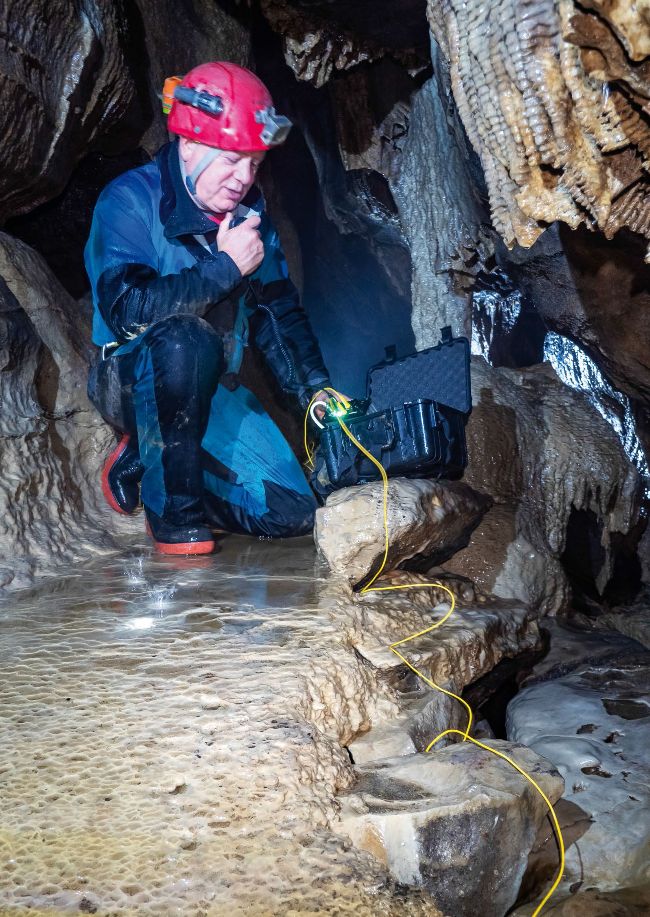OPEN SOURCE UNDERGROUND
Mike Bedford on why caving needn’t only pose a physical challenge – it’s also your chance to try out exciting bits of FOSS-powered kit!
Mike Bedford
Those of you who want to exercise your mind and body at the same time might balk at our suggestion that you take up caving. Yet, as we discovered in LXF244, when we looked at the technology of cave surveying, venturing underground can pose both a physical and a mental challenge.
However, the technology used in caving doesn’t have to end with hand-held electronic surveying tools and laser scanners, coupled with open source Linux software for post-processing and map preparation. Here, we’ll look at how technology can be used in exploring caves, photographing them, monitoring the underground environment for scientific research, and even minimising the risk involved in venturing into these potentially hazardous (my dad tells me it’s perfectly safe-Ed) environments.
You might be surprised to learn that our main theme isn’t the use of Linux software, although that does get a look in. Instead, we’ll mostly be thinking about technology that cavers can use while they’re underground. Laptops - even specially rugged ones - don’t survive long if they’re being dragged through muddy caves. For this reason, we’ll be looking at applications that run either on single board computers, or on microprocessors or microcontrollers that form part of dedicated hardware. Some of these applications are Linux-based, running on Raspberry Pi or similar hardware, while others are embedded applications that don’t run under any operating system. Despite that, though, Linux offers everything that’s needed for developing the embedded code. Oh, and a smattering of Android apps, since smartphones are more forgiving of knocks than laptops.
We hope some of you will take up the challenge of developing caving tech and, if this appeals to you, we’ll show you how to safely take your first steps underground.

By use of low frequencies, cave radios are able to provide communication through several hundred metres of solid rock.
Image credit: Chris Hunter
If you were to venture underground, you’d probably find that your mobile phone signal would be lost within just a few metres from the entrance. Most other radio signals would suffer a similar fate. On an ordinary caving trip, being without a signal for a few hours isn’t a problem, and it could even make a welcome change, but there are times when contact with the outside world can make all the difference.
On long caving trips lasting several days, communication could enable the surface party to give warnings of changing weather conditions such as the onset of heavy rain that could cause flooding underground. And this isn’t the only circumstance in which remaining in touch could be a matter of life and death. Cave rescue teams can also benefit from reliable communication. For example, since exiting a cave with a badly insured casualty could take hours, being able to summon medical assistance to be on-hand when the team reach the cave entrance could be critical.